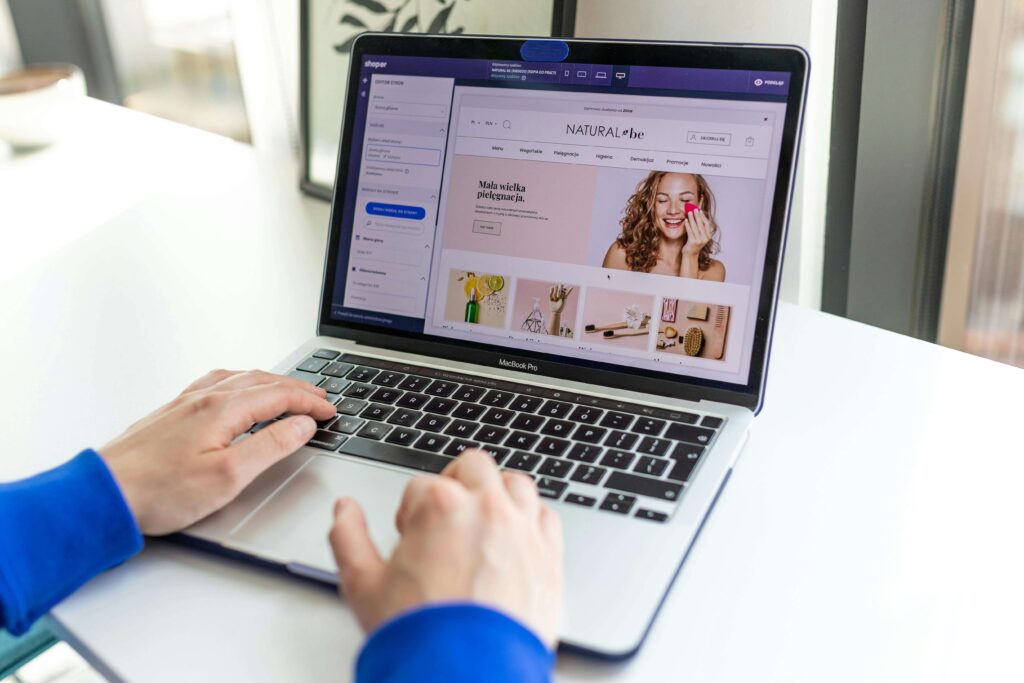Thinking about launching a new online store but paralysed by platform choices? You’re not alone. For new sellers, the fear of picking the “wrong” e-commerce engine can feel like handing your business a flat tyre before the journey even starts. In 2025, Shopify still dominates the conversation—but is it really the best budget-friendly, beginner-proof way to sell online, or just expensive hype? This detailed, jargon-free rundown gives you the good and the bad so you can move forward with confidence.
1. Manage Your New Online Store with One Dashboard, All the Tools—Minus the Headaches
When you sign up for Shopify, you’re greeted by a single, uncluttered dashboard that lets you add products, set prices, manage inventory, print shipping labels and even launch TikTok ads without ever copying a line of code. For first-time founders, this “all-in-one control room” means less jumping between plugins and more time polishing product photos or answering customers.
2. Shopify Payments Simplifies Card Processing for Your New Online Store
Nothing kills buzz like discovering you also need a separate merchant account just to accept card payments. Shopify Payments (powered by Stripe) lets you turn on Visa, Mastercard, Apple Pay and Google Pay with one click—no additional monthly gateway fees. Beginners save both setup time and roughly 2 weeks of paperwork.
3. Built-In Sales Channels Let You Meet Shoppers Where They Already Hang Out
Shopify now natively syncs with Instagram, Facebook Shops, TikTok Shop, Amazon, eBay and—new for 2025—Temu Marketplace. List once, sell everywhere, keep inventory in sync automatically. Perfect if you’ve got an audience on social but zero desire to master spreadsheets or APIs.
4. Give Your New Online Store a Professional Look with Shopify’s Theme Store
Free themes like Dawn and Refresh give you modern, mobile-first storefronts out of the box, while premium themes (generally $250–$400 one-off) add advanced sections such as mega-menus, product tabs and sticky add-to-cart bars. If you can drag, drop and change colours, you can launch a professional-looking store in an afternoon.
5. Powerful App Ecosystem Lets You Add Features as You Grow
Shopify’s App Store now hosts 10,000+ vetted add-ons. Need local delivery scheduling, product bundles or AI-driven upsells? There’s an app for that—usually with a free tier until you scale. Contrast that with standalone open-source carts, where you may end up paying a developer by the hour to bolt on every extra.
6. New AI “Sidekick” Boosts Copy and Customer Support
Rolled out in early 2025, Shopify Sidekick taps generative AI to write product descriptions, craft marketing emails, and even surface why a product isn’t selling (low image quality, price mismatch, etc.). It’s like having a junior marketer on call 24/7—huge for solo founders.
7. Fast, PCI-Compliant Hosting (Already Included in the Price)
Shopify’s CDN serves your pages from 180+ global edge locations and automatically scales for peaks—no cPanel, no server patches. Average load time for a 20-product store sits around 630 ms, well within Google’s Core Web Vitals green zone. Translation: less bounce, better SEO, and one less tech headache.
But Wait—3 Reasons Shopify Might Not Be Perfect for Your New Online Store
- Monthly Fees Add Up
The $19/month Basic plan sounds tiny—until you tack on $10–$50 in app fees or upgrade to the $105/month Shopify plan for cheaper payment rates. - Transaction Fees If You Use a Third-Party Gateway
Refusing Shopify Payments because your country isn’t supported? Expect an additional 0.5%–2% per order. - Less Control Than Open-Source Carts
Power users wanting to tinker with server-level code or custom checkout logic may find Shopify’s closed ecosystem limiting.
| Feature | Basic | Grow | Advanced |
|---|---|---|---|
| Monthly Price (Annual Billing) | $19 | $49 | $299 |
| Monthly Price (Monthly Billing) | $25 | $65 | $399 |
| Online Credit Card Rate | 2.9% + 30¢ | 2.7% + 30¢ | 2.5% + 30¢ |
| In-Person Credit Card Rate | 2.7% + 0¢ | 2.5% + 0¢ | 2.4% + 0¢ |
| Third-Party Payment Fee | 2.0% | 1.0% | 0.6% |
| Staff Accounts | 1 | 5 | 15 |
| Shipping Discount | Up to 77% | Up to 88% + insurance | Up to 88% + insurance |
| Inventory Locations | 10 | 10 | 10 |
| Customer Support | 24/7 Chat Support | 24/7 Chat Support | Enhanced 24/7 Support |
| Market Support | 3 Markets | 3 Markets | 3 Markets + $59/mo for extras |
| POS (Point of Sale) | POS Lite | POS Lite | POS Lite |
| Special Offer | $1/month for 3 months | $1/month for 3 months | $1/month for 3 months |
Frequently Asked Questions
Is Shopify worth it for small businesses in 2025?
Yes—if you value ease of use, built-in payments and fast hosting over ultra-cheap DIY setups.
Do I need coding skills to launch a Shopify store?
No. Drag-and-drop sections, pre-made themes and auto-generated product pages mean zero coding knowledge is required.
Can I switch from Etsy or WooCommerce to Shopify?
Absolutely. Shopify’s free migration tools and apps can import your products, orders and customer data in minutes.
What is the cheapest way to test Shopify?
Use the $1/month—three-month trial (often available via promos) or the $5/month Starter plan to validate your idea before upgrading.
Does Shopify take a percentage of my sales?
Only the standard credit-card processing fee (and an extra 0.5%–2% if you refuse Shopify Payments). There’s no listing fee or per-product fee.
Feel clearer about your choice? Ready to go online? Get started with Shopify today — checkout official website
For more tech-related reviews, check out our Gadgets section where we cover the latest in laptops, smartphones, software, and more!
Let us know in the comments, or drop questions you’d like answered in our next tutorial!


